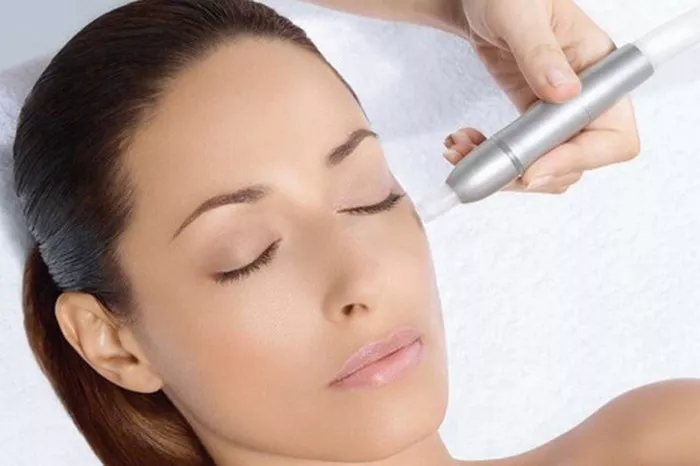Acne is a common skin condition that affects millions of people worldwide, causing distress and impacting self-esteem. While there are various treatments available to manage acne, microdermabrasion has emerged as a popular option for improving acne-prone skin. In this article, we will explore how microdermabrasion can help treat acne, its benefits, potential risks, and its effectiveness in achieving clearer and healthier skin.
Understanding Microdermabrasion
Microdermabrasion is a non-invasive exfoliation procedure that aims to remove the outermost layer of dead skin cells and debris from the skin’s surface. The treatment involves the use of a specialized handheld device that sprays tiny crystals or uses a diamond-tipped wand to gently abrade the skin. Simultaneously, a vacuum-like mechanism suctions away the exfoliated skin cells and impurities, leaving the skin smoother and rejuvenated.
How Does Microdermabrasion Help Acne?
Microdermabrasion can benefit individuals with acne in several ways:
Exfoliation: The primary function of microdermabrasion is to exfoliate the skin, removing dead skin cells that can clog pores and contribute to acne formation. By promoting regular exfoliation, microdermabrasion helps keep the pores clean and prevents the buildup of sebum and bacteria.
Unclogging Pores: Acne often occurs due to the blockage of hair follicles with sebum and dead skin cells. Microdermabrasion aids in unclogging the pores, reducing the occurrence of whiteheads, blackheads, and other non-inflammatory acne lesions.
Stimulating Collagen Production: Microdermabrasion stimulates the production of collagen, a vital protein responsible for maintaining skin elasticity and firmness. As the skin regenerates, collagen helps improve the skin’s texture and minimizes the appearance of acne scars.
Enhancing Skincare Product Penetration: By removing the outer layer of dead skin cells, microdermabrasion enhances the absorption of skincare products. This allows acne-fighting ingredients to penetrate deeper into the skin, making them more effective in treating acne and preventing future breakouts.
Reducing Oil Production: Microdermabrasion can help regulate sebum production in the skin. By reducing excess oil, the likelihood of clogged pores and acne development decreases.
The Microdermabrasion Procedure
The microdermabrasion procedure is generally well-tolerated and involves the following steps:
Cleansing: The skin is thoroughly cleansed to remove any makeup, oils, or debris.
Exfoliation: The microdermabrasion device is applied to the skin, gently exfoliating the surface and removing dead skin cells.
Vacuum Suction: The device’s vacuum mechanism helps suction away the exfoliated particles and impurities.
Moisturization: After the treatment, a soothing and moisturizing cream or serum is applied to nourish the newly revealed skin.
Benefits of Microdermabrasion for Acne
Microdermabrasion offers several benefits for acne-prone skin:
Minimally Invasive: Microdermabrasion is a non-surgical and minimally invasive procedure, making it suitable for individuals with sensitive skin or those seeking a gentle treatment option.
Little to No Downtime: Patients can resume their regular activities immediately after the procedure, as there is minimal downtime or recovery period.
Reduces Hyperpigmentation: Microdermabrasion can help fade acne-related hyperpigmentation, giving the skin a more even tone and reducing the appearance of acne scars.
Safe for Most Skin Types: Microdermabrasion is generally safe for most skin types, including individuals with mild to moderate acne.
Potential Risks and Side Effects
While microdermabrasion is a safe procedure, there are some potential risks and side effects, including:
Mild Redness: Some individuals may experience mild redness immediately after the treatment, which typically resolves within a few hours.
Sensitivity: The skin may feel slightly sensitive or tight for a short period after the procedure.
Sun Sensitivity: The exfoliated skin may be more susceptible to sunburn, so it is essential to apply sunscreen and protect the skin from direct sunlight post-treatment.
Rare Complications: Although uncommon, there is a slight risk of infection, scarring, or changes in skin pigmentation with microdermabrasion.
Conclusion
Microdermabrasion is an effective and non-invasive treatment for improving acne-prone skin. By exfoliating the skin’s surface, unclogging pores, and stimulating collagen production, microdermabrasion helps reduce acne breakouts, improve skin texture, and minimize the appearance of acne scars. The procedure is safe for most skin types and offers little to no downtime, making it a convenient option for individuals seeking clearer and healthier-looking skin. However, it is essential to consult with a qualified dermatologist or skincare professional to determine the best approach for addressing individual acne concerns and to ensure optimal results from microdermabrasion treatments.

